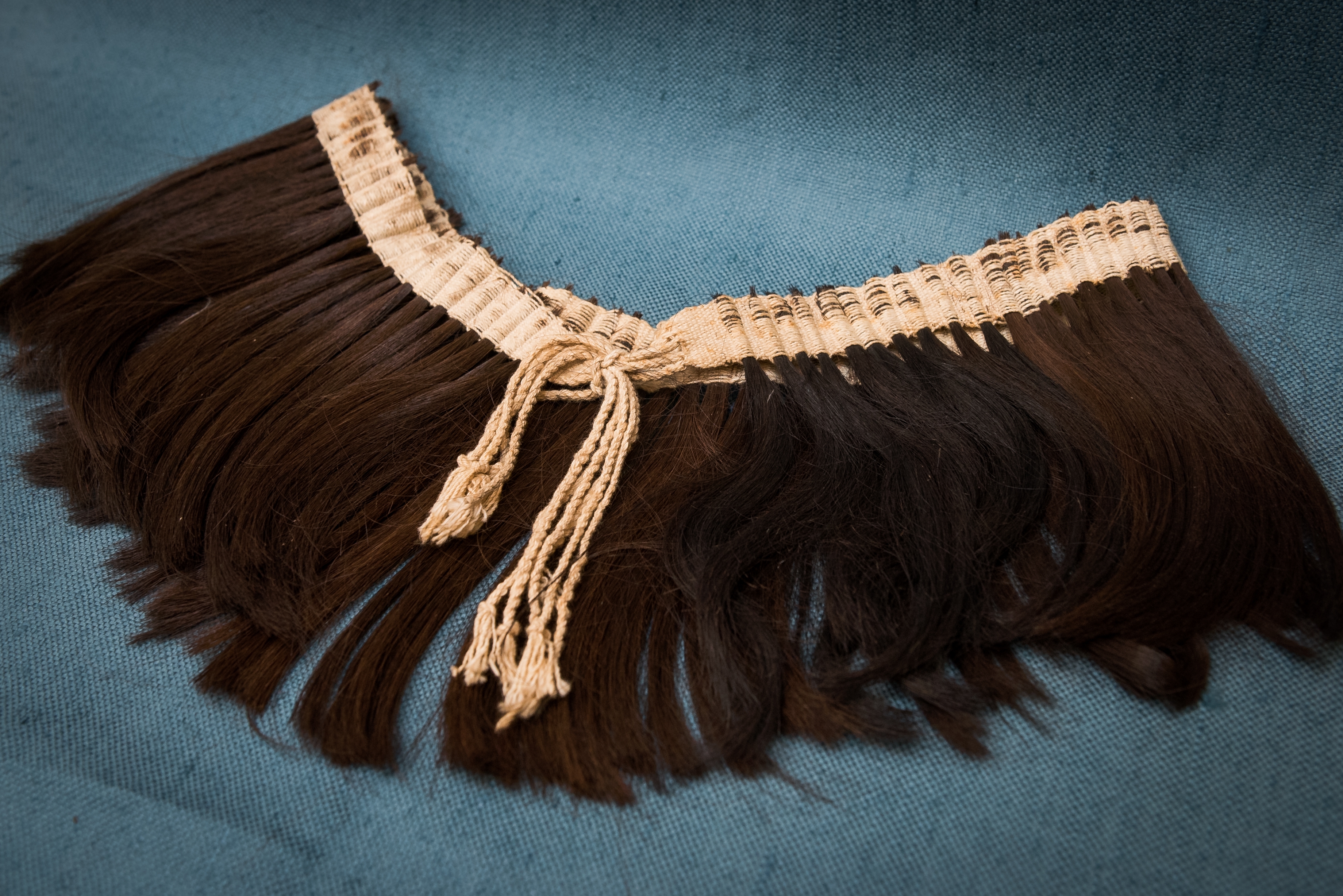
The indigenous Jivaro headhunters of eastern Ecuador, known for shrinking their enemies’ heads, used other human body parts as ritualistic adornment. Hair belonging to fellow tribesmen exhibiting particular courage and valor was braided into waistbands or girdles upon their death in battle. It was believed the attributes of the dead hunter could be imbued into the wearer.
This girdle is particularly elaborate in its construction, which may indicate it was created expressly for the tourist trade. The Jivaro were impassioned warriors, with a desire for vengeance and retaliation against transgressions real or imagined. Shrinking their victims’ heads was the final act of avenging the ancestral spirits.
The collection of Jivaro objects was donated by Charles Fugler, an entomologist at Auburn University, and a friend of Herbert Boschung, the director of the Natural History Museum in the late 1960s. Fugler had been doing research in Peru and Ecuador and had accumulated a collection of indigenous artifacts that Boschung hoped to acquire for the museum’s collections.
The Ethnographic Collection is an eclectic mix of some 1,500 artifacts crafted by indigenous people, most notably collected from the South Pacific and Australia by Walter B. Jones during WWII. It also contains some 500 Egyptian artifacts, a small representative collection of Native American items and materials brought back from South America’s Amazonia. The collection is housed in the Mary Harmon Bryant Collections Facility.
Mary Beth Prondzinski, natural history collections manager for The University of Alabama Museums, provided the above information.
